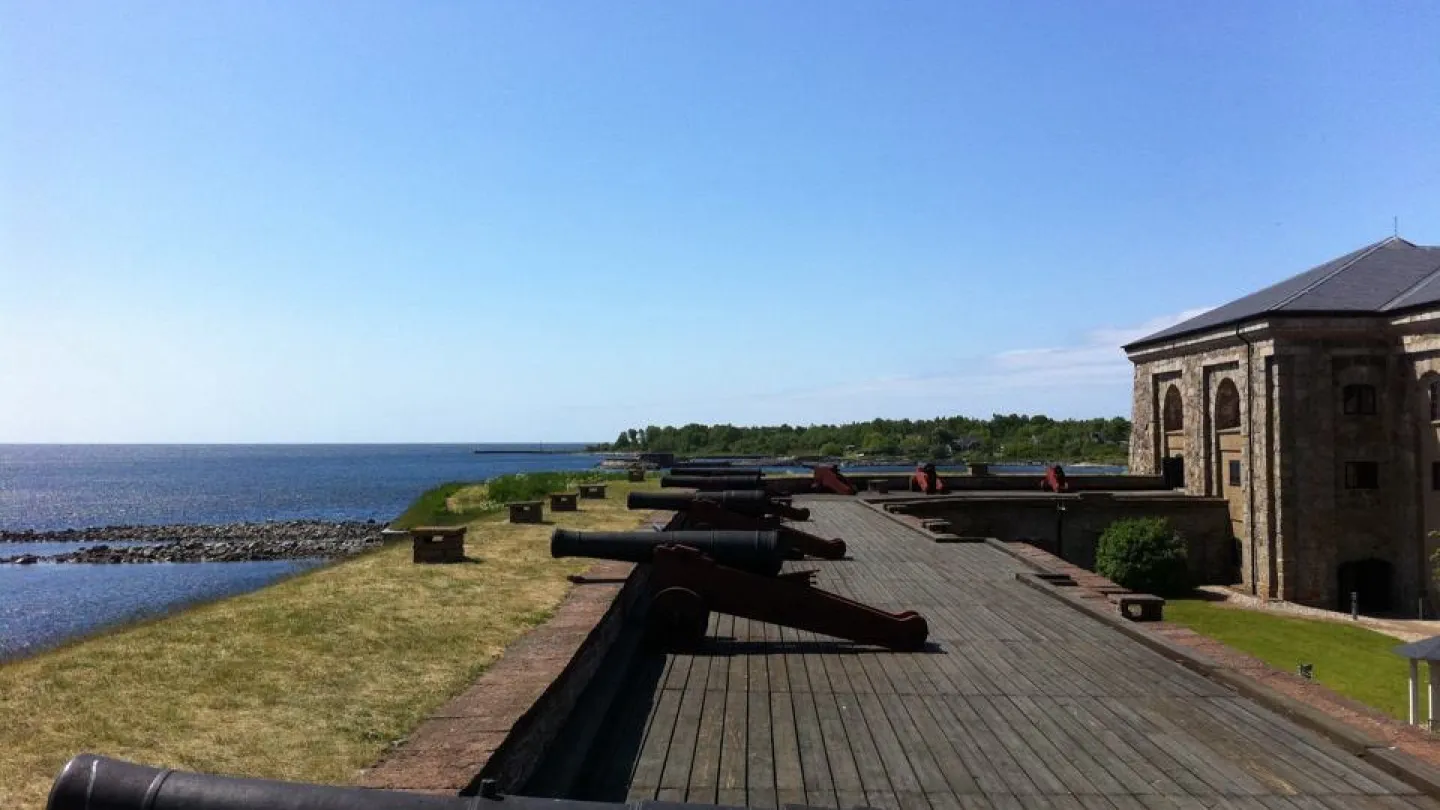The mission of Drottningskär Citadel has always been, together with Kungsholmsfort, ships, and barriers, to defend the fleet and Karlskrona. The fortress is one large protective structure for the personnel firing the artillery. Karl XI, who initiated the construction of Karlskrona, commenced a large number of fortress constructions and also increased the armament of the various fortresses.
Responsibility for the fortress's armament, leadership, and management has varied over time. Most often, the Admiralty has been responsible for the armament, and the War Collegium for the fortress. The very first cannons come to Drottningskär Citadel from Vaxholm and Dalarö redoubts and from the Admiralty's arsenal. They are manned by the artillery regiment, which consists of professional soldiers and was established in the 17th century. The artillery regiment was stationed at various garrisons and fortresses as needed. During peacetime, there are no artillery regiment soldiers at Drottningskär Citadel; they are ordered there when a conflict situation arises.
Daniel Grundell becomes the Admiral's Master Gunner in 1712 and leads the work at the artillery office in Karlskrona. Grundell writes a manual on naval artillery, a textbook Necessary Information about Artillery for Land and Sea, and a treatise on fireworks. Grundell has also made educational artillery engravings and specifies the locations around Karlskrona where the various pieces should be placed. During the Nordic War, Grundell is said to have hit a sail with a cannon shot 1800 meters away. It is generally considered that a cannon in 1705 had a range of 712 meters.
In 1724, Lieutenant General Carl Cronstedt, the commander of the artillery regiment, is called to Karlskrona to conduct gunpowder tests and to draw up plans and models for batteries, gun carriages, and pieces. This results in some of the army's gun carriages and barrels being added to the fortifications in addition to the Admiralty's.
At Drottningskär Citadel, the armament has mainly consisted of 24-pound and 18-pound cannons, 60 and 80-pound mortars, and 16-pound howitzers (supplied by the War Collegium).
One might often think of the barrel when talking about cannons. The gun carriage is important for being able to hit with a cannon. It should be strong enough to withstand the cannon's recoil, be able to be aimed as quickly as possible, and not take up too much space. At the end of the 18th century, the shipbuilder af Chapman's and Lieutenant Colonel Aschling's swivel gun carriages, a kind of pivoting carriage that limits recoil, particularly suitable for fortress pieces, are found to be beneficial and are acquired as resources allow for Drottningskär Citadel.
Fact text written by Marie Chen, Karlskrona Municipality, in collaboration with Blekinge Museum, which provided the factual basis.

